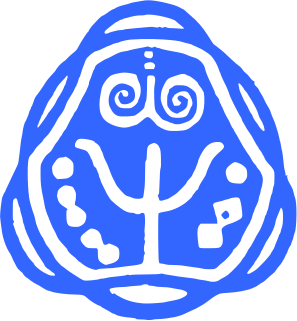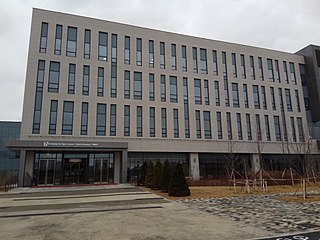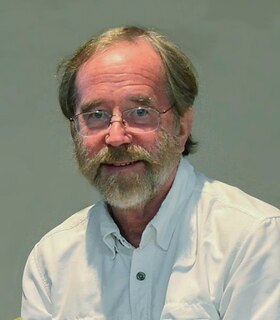
Particle physics is a branch of physics that studies the nature of the particles that constitute matter and radiation. Although the word particle can refer to various types of very small objects, particle physics usually investigates the irreducibly smallest detectable particles and the fundamental interactions necessary to explain their behaviour. By our current understanding, these elementary particles are excitations of the quantum fields that also govern their interactions. The currently dominant theory explaining these fundamental particles and fields, along with their dynamics, is called the Standard Model. Thus, modern particle physics generally investigates the Standard Model and its various possible extensions, e.g. to the newest "known" particle, the Higgs boson, or even to the oldest known force field, gravity.

The European Organization for Nuclear Research, known as CERN, is a European research organization that operates the largest particle physics laboratory in the world. Established in 1954, the organization is based in a northwest suburb of Geneva on the Franco–Swiss border and has 23 member states. Israel is the only non-European country granted full membership. CERN is an official United Nations Observer.

The GSI Helmholtz Centre for Heavy Ion Research is a federally and state co-funded heavy ion (Schwerion) research center in the Wixhausen suburb of Darmstadt, Germany. It was founded in 1969 as the Society for Heavy Ion Research, abbreviated GSI, to conduct research on and with heavy-ion accelerators. It is the only major user research center in the State of Hesse.

John Robert Schrieffer was an American physicist who, with John Bardeen and Leon Cooper, was a recipient of the 1972 Nobel Prize in Physics for developing the BCS theory, the first successful quantum theory of superconductivity. In 2005, Schrieffer fell asleep while driving and received a sentence of two years in prison for vehicular manslaughter which killed one, and injured seven other people.

TRIUMF is Canada's national particle accelerator centre. It is considered Canada's premier physics laboratory, and is consistently regarded as one of the leading subatomic physics research centers on the international level. Owned and operated by a consortium of universities as a joint venture, TRIUMF is located on the south campus of one of its founding members – the University of British Columbia in Vancouver, British Columbia. TRIUMF houses the world's largest cyclotron, a source of 520 MeV protons, which was named an IEEE Milestone in 2010. TRIUMF's accelerator-focused activities involve particle physics, nuclear physics, nuclear medicine, materials science, and detector and accelerator development.

The United States Department of Energy National Laboratories and Technology Centers are a system of facilities and laboratories overseen by the United States Department of Energy (DOE) for the purpose of advancing science and technology to fulfill the DOE mission. Sixteen of the seventeen DOE national laboratories are federally funded research and development centers administered, managed, operated and staffed by private-sector organizations under management and operating (M&O) contract with DOE.

The Paul Scherrer Institute (PSI) is a multi-disciplinary research institute which belongs to the Swiss Federal Institutes of Technology Domain covering also ETH Zurich and EPFL. It was established in 1988 through the merger of EIR and SIN. It is based in Villigen and Würenlingen.

John Bannister Goodenough is an American materials scientist, a solid-state physicist, and a Nobel laureate in chemistry. He is a professor of mechanical engineering and materials science at the University of Texas at Austin. He is widely credited with the identification and development of the lithium-ion battery, for developing the Goodenough–Kanamori rules in determining the sign of the magnetic superexchange in materials, and for seminal developments in computer random access memory.

Alec Nigel Broers, Baron Broers, FRS FMedSci FREng is a British electrical engineer.

The ISOLDE Radioactive Ion Beam Facility, is an on-line isotope separator facility located at heart of the CERN accelerator complex on the Franco-Swiss border. The name of the facility is an acronym for Isotope Separator On Line DEvice. Created in 1964, the ISOLDE facility started delivering radioactive ion beams to users in 1967. Originally located at the SynchroCyclotron accelerator, the facility has been upgraded several times most notably in 1992 when the whole facility was moved to be connected to CERN’s ProtonSynchroton Booster (PSB). Entering its 6th decade of existence, ISOLDE is currently the oldest facility still in operation at CERN. From the first pioneering ISOL beams to the latest technical advances allowing for the production of the most exotic species, ISOLDE benefits a wide range of physics communities with applications covering nuclear, atomic, molecular and solid-state physics, but also biophysics and astrophysics, as well as high-precision experiments looking for physics beyond the Standard Model. The facility is operated by the ISOLDE Collaboration, comprising CERN and fifteen (mostly) European countries. As of 2019, more than 800 experimentalists around the world are coming to ISOLDE to perform typically 45 different experiments per year.
The Max-Planck-Institut für Kernphysik is a research institute in Heidelberg, Germany.
Heinz-Jürgen Kluge, known as Jürgen Kluge, is a physicist probably best known for the development of ion-storage devices and methods for accurate measurements of nuclear masses.

Institute of Physics, Bhubaneswar is an autonomous research institution of the Department of Atomic Energy (DAE), Government of India. The Institute was founded by Professor Bidhu Bhusan Das, who was Director of Public Instruction, Odisha, at that time. Das set up the institute in 1972, supported by the Government of Odisha under the patronage of Odisha's education minister Banamali Patnaik, and chose Dr. Trilochan Pradhan as its first director, when the Institute started theoretical research programs in the various branches of physics. Other notable physicists in the Institute's early days included Prof. T. P. Das, of SUNY, Albany, New York, USA and Prof. Jagdish Mohanty of the Indian Institute of Technology, IIT Kanpur and Australian National University, Canberra. In 1981, the Institute moved to its present campus near Chandrasekharpur, Bhubaneswar. It was taken over by the Department of Atomic Energy, India on 25 March 1985 and started functioning as an autonomous body.

ASTRID is a particle storage ring at the Department of Physics and Astronomy of Aarhus University. ASTRID was designed, constructed and is operated by the Institute for Storage Ring Facilities in Aarhus (ISA).
Dr. Rudolf Maria "Ruud" Tromp is a Dutch American scientist at IBM Research Division, Thomas J. Watson Research Center and a Physics Professor at Leiden University.

The Helmholtz-Zentrum Dresden-Rossendorf (HZDR) is a German research laboratory based in Dresden that conducts research in three of the Helmholtz Association's areas: matter, health, and energy. While the research center was formerly known as Forschungszentrum Dresden-Rossendorf, the research site dates back as far as 1956, when the Zentralinstitut für Kernforschung in East Germany was founded. HZDR is a member of the Helmholtz Association of German Research Centres.

The Institute for Basic Science is a Korean government-funded research institute that conducts basic science research and relevant pure basic research. IBS was established in November 2011 by the Lee Myung-bak administration as a research institute, later be a core of the International Science and Business Belt (ISBB) upon relocation of their headquarters from a rented property to their own campus in January 2018 using land reclaimed from the Taejŏn Expo '93 in Expo Science Park. Comprising 30 research centers with 68 research groups across the nation and a headquarters in Daejeon, IBS has approximately 1,800 researchers and doctoral course students. Around 30% of the researchers are from countries outside of South Korea. The organization is under the Ministry of Science and ICT.

The MIAMI facility is a scientific laboratory located within the Ion Beam Centre at the University of Huddersfield. This facility is dedicated to the study of the interaction of ion beams with matter. The facilities combine ion accelerators in situ with Transmission Electron Microscopes (TEM): a technique that allows real-time monitoring of the effects of radiation damage on the microstructures of a wide variety of materials. Currently the laboratory operates two such systems MIAMI-1 and MIAMI-2 that are the only facilities of this type in the United Kingdom, with only a few other such systems in the world. The MIAMI facility is also part of the UKNIBC along with the Universities of Surrey and Manchester, which provides a single point of access to a wide range of accelerators and techniques.

Mei-Ching Hannah Fok is a Planetary Scientist at the Goddard Space Flight Center. She was awarded the NASA Exceptional Scientific Achievement Medal in 2011 and elected a Fellow of the American Geophysical Union in 2019. She has worked on the IMAGE, Van Allen Probes and TWINS missions.

Joseph "Joe" E. Greene, known in his professional writing as J. E. Greene is an American materials scientist, specializing in thin films, crystal growth, surface science, and advanced surface engineering. His research and scientific contributions in these areas have been described as "pioneering" and "seminal" and that his work has "revolutionized the hard-coating industry".
















